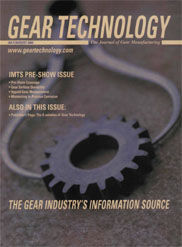The traditional way of controlling the quality of hypoid gears' tooth flank form is to check the tooth flank contact patterns. But it is not easy to exactly judge the tooth flank form quality by the contact pattern. In recent years, it has become possible to accurately measure the tooth flank form of hypoid gears by the point-to-point measuring method and the scanning measuring method. But the uses of measured data of the tooth flank form for hypoid gears have not yet been well developed in comparison with cylindrical involute gears. In this paper, the tooth flank form measurement of generated face-milled gears, face-hobbed gears and formulate/generated gears are reported. The authors discuss the advantages and disadvantages of scanning and point-to-point measuring of 3-D tooth flank forms of hypoid gears and introduce some examples of uses of measured data for high-quality production and performance prediction.
